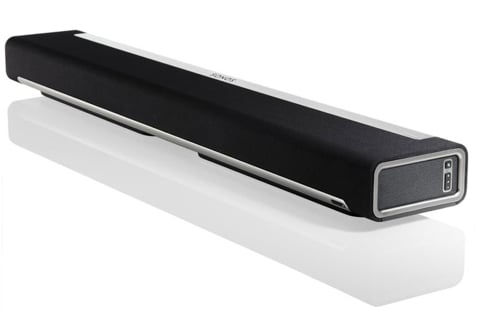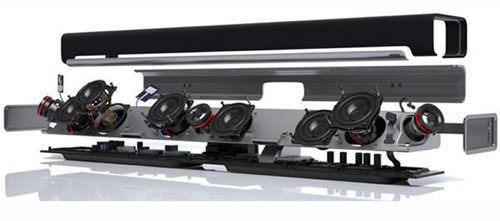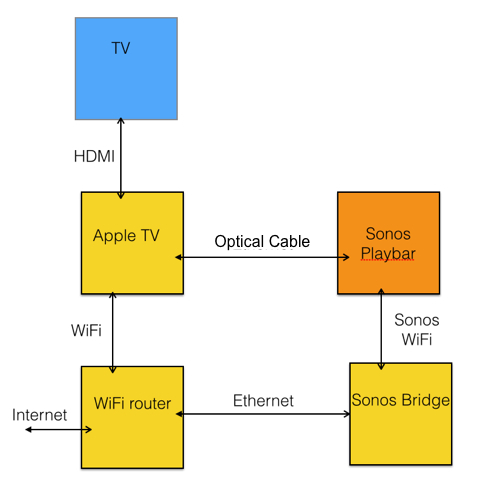This article is more than 1 year old
Ancient telly, check. Sonos sound system, check. OMG WOAH
Reg bloke blown away by home cinema sound system - but is it worth the price?
Oh boy! I just turned my crap 10-year-old Sony Bravia TV into a home theatre by replacing the limited speakers inside the Bravia’s enclosure with a Sonos Playbar. I'm blown away.
The Playbar is a substantial piece of kit.

Sonos Playbar
It weighs 11.9lbs (5.4kg) and its dimensions are 3.35” high, 35.43” long and 5.5” deep (85mm x 900mm x 140mm). Get whacked around the head with this and you’ll see stars alright.
There is a central recessed connection area at the rear middle of the Playbar which takes a power cord, an optical cable and has a couple of Ethernet ports: one for connecting the Playbar to the Sonos Bridge home router box. In my case that’s a BT OpenWorld home hub.
That provides the Internet connectivity needed by the Apple TV and the Sonos system for external streaming media sources.
Inside the Playbar are nine separate amplified speakers; six mid-range and three tweeters with, Sonos says, automatic equalisation.

Component speakers inside the Playbar
Config and caveats
I have an old (ie, pre-optical cable socket) Sony TV: a Bravia LCD Digital Colour TV KGL-32S2530. Sonos' PR peeps provided a Playbar, a second generation Apple TV unit - the black box, and optical cable. The idea was to have the TV hooked up to the Apple TV unit via an HDMI cable and the Apple TV box linked to the Playbar via the optical cable, thus fooling the Playbar into thinking it was getting raw TV audio input.
Here’s a schematic diagram of this setup:

My Playbar and Apple TV setup.
Sonos recap
As a reminder, a Sonos Wi-Fi speaker setup involves audio sources coming in to the home’s Wi-Fi router and thence to the Sonos Bridge Unit. It then streams the audio files to the Sonos speakers connected by the proprietary Sonos mesh Wi-Fi network – which, by the way, is not WiSA-compliant.
The Wireless Speaker and Audio Association (WiSA) is a trade body of Wi-Fi speaker suppliers which has developed its own network protocol for playing high-quality audio files. According to their marketing blurb: “WiSA technology transmits 24-bit audio at sample rates up to 96k/second, with robust error recovery for uninterrupted listening enjoyment. With extremely low latency and negligible speaker-to-speaker delay, it offers flawless wired-quality performance and reliability.”
WiSA buffs may well say the Sonos system is inferior. I wouldn’t know as I'm coming from below, so to speak, but the Sonos system delivers canine genitalia-class music to my ears.
There are five main components in this system:
- Entry-level Play:1 speakers (review here)
- Mid-range Play:3 speakers (review here)
- Bigger and better Play:5 speakers
- The sub-woofer (review here)
- Playbar
Each unit is separately powered, has its own amplifier, and connects by Wi-Fi to the other systems. The Play:1, 3 and 5 speakers can be combined in stereo pairs with the sub providing under-pinning.
Various streaming Internet radio sources are supported and music libraries on iPhone, iPad, iMac and MacBook computers can be played through the Sonos system.
